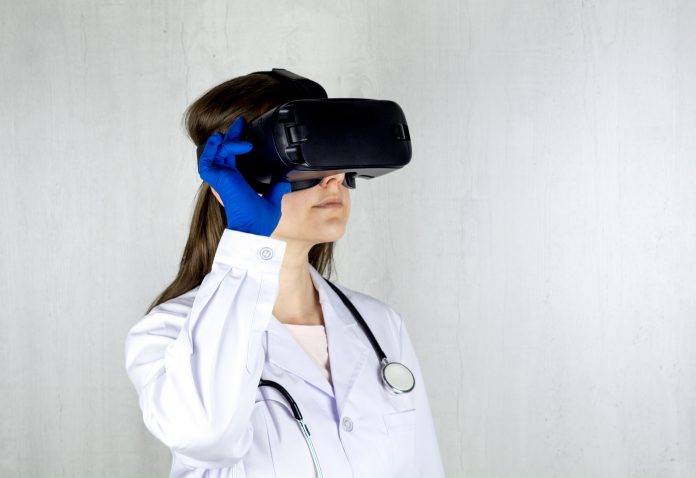Online education was already part of the mainstream before the pandemic. Now, academic institutions explore innovative ways to fine-tune their e-learning processes.
Students also appreciate virtual laboratories. With their help, they can now do any assignment with realistic simulations. And for educators, the teaching process is more efficient.
Even so, people in academia still have their reservations about virtual labs. The main detractors cite the increase in student laziness as the primary disadvantage.
This article discusses the benefits of virtual labs in education. We’ll also address the potential drawbacks of relying on simulated laboratories.
What Is a Virtual Lab?
A virtual lab is an online (scientific) laboratory with remote access. These platforms are most suitable for the sciences, where experimentation is the centerpiece.
A typical virtual lab can contain simple software like calculators and spreadsheets for data sampling. Other advanced laboratories often have futuristic tech for lifelike simulations and astronomical calculations.
Categories of Virtual Laboratories
Online laboratories are not homogenous; they differ in their purpose, application, and composition. This diversity explains why institutions can deploy platforms to meet specific student needs.
Here are the virtual lab categories in modern academia.
- Laboratories. These platforms simulate physical labs on screens. The online experience offers the users the same facilities as in the on-site lab. The only difference is that the interaction is limited to a 2D environment.
- Simulations. People have the opportunity to explore a different reality from a remote location. Simulators like Labster can replace life-threatening processes with affordable, less risky experiences. For instance, flight simulators help students get ready to pilot an actual plane.
- VR spaces. Virtual reality classes offer a more immersive experience than simulators. Gadgets like Microsoft’s HoloLens provide a personalized three-dimensional ecosystem with audio supplements.
- Applets. These are small computer programs designed for specific purposes and accessible via the web.
Other virtual lab categories exist beyond those on this list. We’ve decided to focus on the most relevant lab resources at the moment. Soon, more digital solutions will flood the market and improve the academic experience.
4 Benefits of Virtual Labs in Online Education
Virtual labs represent the future of education. This viewpoint sounds credible considering the increasing implementation of digital lab solutions. So, let’s go through the advantages of integrating online labs into the curriculum.
-
Affordability
First off, virtual labs are not free, at least not the top-notch ones. But online labs are far less expensive than real ones. One platform can serve an entire institution without spending resources on its development. Besides, institutions don’t need to worry about maintenance costs and other expenses.
-
Flexible Access
All virtual labs are online — cloud-based or accessible via the web. As a result, users have unhindered access to the platform whenever they want. Students can also access the lab on any device from any location, just as they can access a do my paper writing service. And as the pandemic looms large, virtual labs are indispensable for contactless learning.
-
Fast-Paced Communication
Virtual labs display real-time results of experiments and research. Some advanced laboratories offer educators mailing solutions to assign digital content to students. This seamless communication channel speeds up interactions between scholars and instructors.
-
Cutting-Edge Technology
Tools like Virtual Microscope and Phet Simulations offer futuristic solutions to science students. They can compete with peers using advanced technological solutions. AI-powered laboratories allow replacing outdated learning standards with modern teaching techniques.
4 Drawbacks of Using Virtual Laboratories
Despite the promises of virtual laboratories, this technology presents some problems. Most of these issues relate to the human factor or the lab’s technical framework. Let’s go through the drawbacks of virtual labs.
-
Being Expensive for Individual Use
The most significant drawback to the implementation of virtual labs is the cost. Many online labs require paid subscriptions. Since most students lack the money to buy these solutions, they can’t keep pace with their mates.
-
Inability to Replicate Physical Learning
No simulator and virtual reality gadget can replace the physical aspect of learning. Virtual labs deprive the students of the realism and hands-on learning experience.
-
Problems With the Internet Connection
Students without a reliable Internet connection will struggle to interact with their peers. Teachers have also complained about connectivity problems due to occasional software glitches. Such issues disrupt the entire academic process.
-
Obstacles for Students With Disabilities
Virtual labs cater to the general population without considering students with disabilities. Unfortunately, companies are not rushing to invest in these academic solutions. Thus, the learning process is not inclusive enough.
What Is the Future of Virtual Labs?
Irrespective of your stance on virtual labs, they are here to stay. These digital resources save costs and enhance student productivity. Moreover, students can take part in school work from any location. Due to personalized experience, students can learn from their mistakes.
Yet, virtual labs still need improvements to replicate in-house laboratories. Schools should subsidize these facilities for students in financial aid programs. Most importantly, new platforms should provide solutions for individuals with disabilities.


































